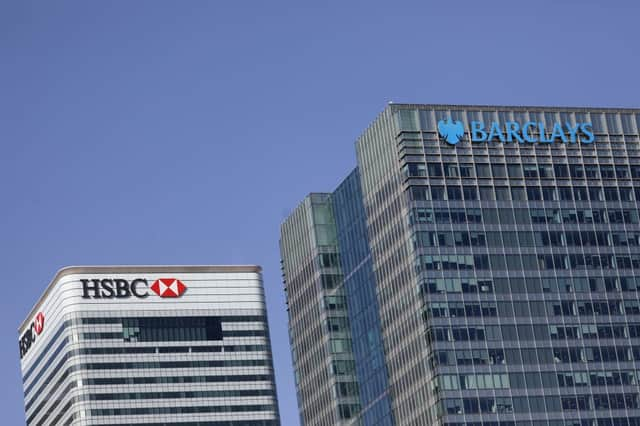The FinCEN files scandal explained - and how HSBC bank is involved


UK-based banks let criminals and fraudsters move dirty money around the world, according to leaked banking documents.
BBC Panorama has revealed that more than 2,000 sensitive banking papers detailing over two trillion US dollars were leaked to BuzzFeed News and subsequently shared with the International Consortium of Investigative Journalists.
Advertisement
Hide AdAdvertisement
Hide AdThe papers allege that HSBC continued to allow the runners of a Ponzi scheme to transfer money, despite having knowledge of the scam. It is also claimed that Russian oligarchs used banks to funnel money to the West, despite being covered by sanctions.
JP Morgan is also alleged to have moved $1 billion through a London account without knowing the source of the money, before later discovering that the balance may have been owned by a gangster boss on the FBI’s top 10 most wanted list.
What are the FinCEN files?
The cache of 2,500 files are known as FinCEN (from the US Financial Crimes Investigation Network).
These are mostly files banks sent to the US authorities between 2000 and 2017, raising concerns about suspicious activity in clients’ accounts.
Advertisement
Hide AdAdvertisement
Hide AdBBC Panorama describes the files as “some of the international banking system’s most closely guarded secrets.”
What are SARs and why are they important?
When suspicions are raised about transactions made in dollars, banks are required to send reports to Financial Crimes Enforcement Network, a branch of the US treasury who combat financial crime.
One method of recording concerns is via a SAR (Suspicious Activity Report). A financial institution is compelled to send an SAR if they are concerned about activity. It’s these files which have been leaked to the media.
Some banks have been accused of filing the SARs, but continuing to carry on moving the money.
Advertisement
Hide AdAdvertisement
Hide AdAnti-corruption group Transparency International UK said the SARs “repeatedly cite weak money laundering defences in the UK financial sector as a major problem.”
It added, “The leak shows how UK banks continually fail to address suspicious activity and instead offered their services to those with money to hide.
“Transparency International UK’s research has previously identified 86 UK banks and financial institutions which have, unwittingly or otherwise, helped corrupt individuals acquire assets and move suspicious wealth.”
What do the files allege?
The banking papers detail transactions of more than $2 trillion (USD).
Here’s what they allege:
- HSBC moved millions of dollars from a known Ponzi scheme
Advertisement
Hide AdAdvertisement
Hide Ad- A close associate of Russian President Vladimir Putin used Barclays bank to circumvent sanctions
- JP Morgan potentially allowed a mob kingpin to move millions of dollars through the UK.
- A Russian oligarch was able to fund the husband of a high profile Conservative Party donor
- Deutsche bank moved money for money launderers connected to drug traffickers, gangsters and terrorists.
Advertisement
Hide AdAdvertisement
Hide Ad- Standard Chartered funnelled money for Arab Bank despite client accounts having links to terrorism.
What is a Ponzi scheme?
One of the stories at the centre of the scandal revolves around a Ponzi scheme, in which investors were defrauded of millions of dollars.
It is alleged that HSBC moved money from the $80 million from US accounts to HSBC accounts in Hong Kong.
A Ponzi scheme lures investors with promises of high returns at little risk to their money. The scheme pays money from new investors to earlier investors. Investors are led to believe that the scheme is generating money via the sale of products or other means, rather than from fellow investors.
Advertisement
Hide AdAdvertisement
Hide AdThe fraud linked with HSBC is known as the WCM777 Ponzi scheme. Chinese national Ming Xu promised investors 100 per cent in 100 days via the sale of cloud computing software. The scheme targeted poor communities and used Christian imagery to attract Asian and Latino families.